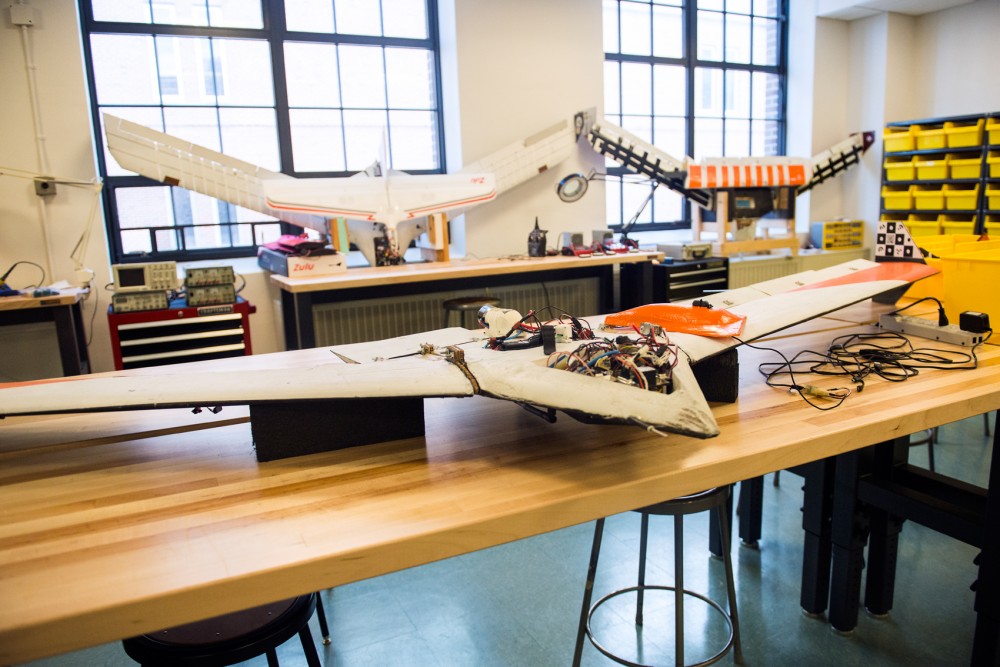As drone use becomes more widespread, state transportation departments — including Minnesota’s — are using the unmanned aerial vehicles for bridge inspections.
Last month, the American Association of State Highway and Transportation Officials released a survey that found 33 of 50 state transportation departments are currently using, testing or investigating drone usage. Included in that group, the Minnesota Department of Transportation has started to use drones.
“We’ve been hearing a lot of info from communities anecdotally that there was a lot of interests in drones or UAVs, so we thought, ‘Let’s do a survey,’” said AASHTO media relations manager Tony Dorsey. “[Transportation departments] have the reputation of doing things old-fashioned … but they’re working to do things better and using new technology to do this.”
In Michigan, the state’s Department of Transportation compared the costs of inspecting a bridge manually versus drone inspection. Manual inspection of a freeway bridge costs about $4,600, but the cost of inspection via drone was about 5
percent of that because the Michigan Department of Transportation only needed to pay for a pilot, spotter and an hourly drone rental fee.
Jennifer Zink, MnDOT’s principal bridge inspection engineer, said the savings from drones are significant. Equipment and inspectors can be expensive, while cost-effective drones take better footage and collect more data, she said.
Drones’ agility and range also make them well-suited for bridge inspections because they can reach areas that humans couldn’t typically reach, Zink said.
“A lot of inspectors don’t get access to certain elements as frequently as they should,” she said, “especially ones that are over water or traffic.”
But that doesn’t mean drones are replacing jobs because bridge inspection still requires personal evaluation, said MnDOT public affairs coordinator Mary McFarland Brooks.
“MnDOT just wants to take advantage of the technology at hand,” she said.
Rules and regulations
While MnDOT has embraced the usefulness of unmanned aerial vehicles, the department still has to navigate an evolving regulatory landscape.
Depending on who is flying a drone, there are different regulations the user needs to abide by.
The federal government is expected to unveil a list of regulations this summer. In the meantime, the Minnesota Legislature has moved to regulate drone use in the state.
“The [Federal Aviation Administration] has kind of partitioned people into hobbyists, people flying the plane for fun and non-hobbyists, [which is] anybody flying the plane for research purposes or part of a commercial enterprise,” said Pete Seiler, a University of Minnesota assistant professor of aerospace engineering and mechanics and a participating faculty member at the Uninhabited Aerial Vehicle Laboratories.
“We at the University are not hobbyists, so we have to register all of our aircrafts with the FAA and tell them where we’re flying, when, and which aircrafts will be flying,” he said.
Since MnDOT does not own or pilot drones themselves, their program falls under commercial use. The department registers and pays an annual fee and insurance, as well as insurance for a commercial operator’s license, Zink said.
“There’s a lot of regulations and hoops and paperwork to jump through before we can actually go out into the field,” she said.











